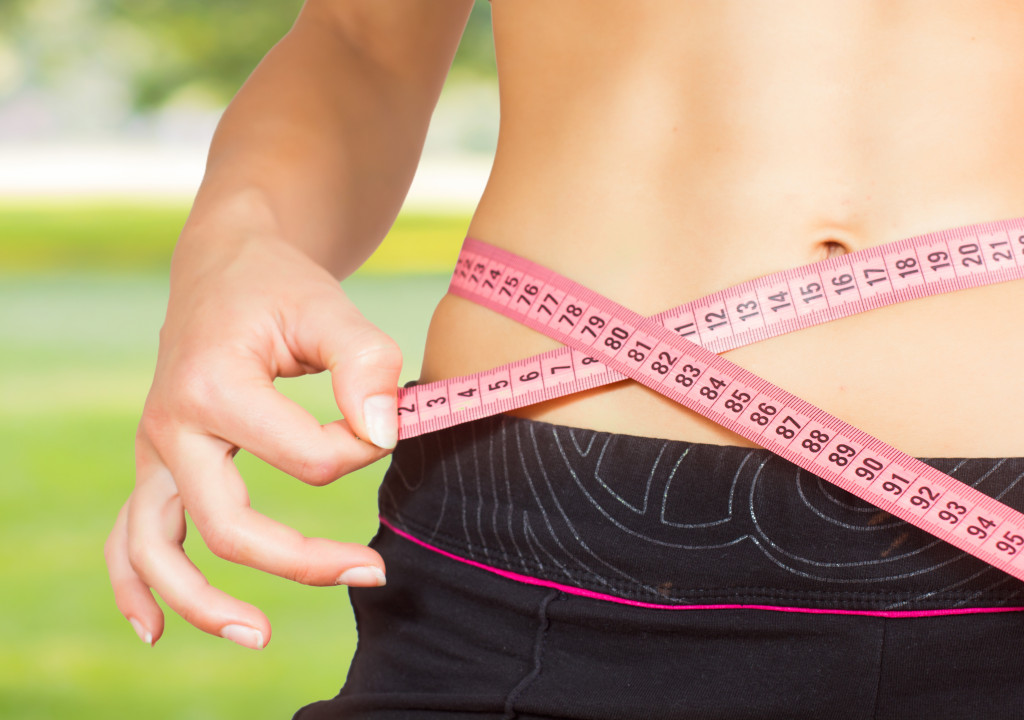While there are a few efforts to show “real people” in magazines and other media, most images still show women and men with impossibly “perfect” bodies based on what the editors believe to be the ideal. It is now widely known that these images are extremely altered using photo-editing technology. Even some celebrities themselves have decried the alteration of their looks because it assumes that their real bodies are not good enough.
Social media further pushes these boundaries as mobile apps enable every smartphone user to edit a selfie before posting. Most people, including teenagers and pre-teens, routinely edit their photos, making their bodies and faces look slimmer. This has a domino effect as young social media users compare their real bodies to these edited ones.
How This Affects Body Image
According to the National Eating Disorders Association (NEDA), a person’s perception of their body, including the thoughts and attitudes toward physical appearance, weight, shape, and height, make up that person’s body image. If the person sees this as inferior to what the media claims to be the ideal, the person develops a negative body image.
This is reflected in the results of the YouGov Body Image Study 2021 conducted from April 26 to 27 nationwide among 1,302 respondents aged 16 and older. A majority or 69 percent stated that fashion companies promote idealized body images. More than 75 percent stated that media disseminates this, and the pressure to attain a certain body type is strongest on women. About 50 percent of respondents have experienced this pressure. Hence, 25 percent perceive themselves to be less attractive than average, 20 percent describe themselves as overweight, and 20 percent describe themselves as chubby.
What a Negative Body Image Results In
A person with a negative body image is extremely dissatisfied and disappointed with herself because she sees her body through a warped and overly critical lens. She thinks her body needs to be changed to match the artificial ideal form. She is ashamed of herself and becomes self-conscious, avoiding social interactions and retreating into self-isolation. On the other hand, some put up a veneer as a psychological shield. They appear to be jolly and make fun of their body shape in front of others. Behind all these are emotional and psychological wounds that create exceedingly low self-esteem and mental health issues like depression and anxiety, among others.
The attitude toward food becomes negative because the person associates this with weight and body shape. Eating becomes not a source of nutrition but a source of guilt and shame. The person with a negative body image gets angry at herself and blames herself for “being fat.” Food then becomes a weapon that she punishes herself with. This results in eating disorders. According to the American Psychiatric Association (APA), about five percent of the American population, mostly females aged 12 to 35, have an eating disorder.

Various Eating Disorders
A person with anorexia nervosa essentially stops eating to the point of starvation and even death. Among mental health disorders, it has the highest mortality rate apart from the use of illegal substances. The person usually tries to hide this disorder and makes excuses like saying she has already eaten. The rapid weight loss will be apparent, and without intervention, those with this disorder become skeletal in appearance. When they look in the mirror, though, they still perceive themselves as fat.
A person with bulimia eats like everyone else and binges in private. Afterward, she induces herself to vomit or misuses laxatives. This cycle causes gastric rupture, esophageal tears, and cardiac arrhythmias, and can also be fatal.
A person with a binge eating disorder undergoes periods of uncontrolled bingeing, usually in secret. She eats large volumes of food and does not seem satiated. The person becomes obese and can develop hypertension, cardiovascular disease, and diabetes.
A person with rumination disorder repeatedly regurgitates and rechews swallowed food. She becomes undernourished because the amount of food she ingests is limited.
A person with avoidant/restrictive food intake disorder (ARFID) becomes extremely picky in what she eats, often limiting herself to a certain food only. She becomes malnourished as she lacks the proper nutrients that the body needs.
A person with pica eats non-food items compulsively. This can include pieces of plastic, rubber, wood, and even metal or paint chips. She can get poisoned or suffer intestinal blockages.
There are professional treatments for anorexia nervosa and all other eating disorders. It is urgent to intervene to save lives.
Body Acceptance, Respect, and Care
Boston Children’s Hospital defines body positivity as the belief that all bodies, regardless of shape and size, deserve respect, acceptance, and care. It highlights the importance of instilling body positivity in children and enabling them to be critical of media messages that promote false body images.
Body positivity must help everyone shift the focus from body appearance to what the body can do, including what it can do for differently abled persons. This also shifts the focus on food and physical activity as tools to enable the body to function at its best. Some prefer to call this body neutrality because they argue that a person may not necessarily feel beautiful every day. The essence is the same, though. If the body is accepted for what it is, treated with respect, and properly cared for, it will support a person toward reaching her goals.






